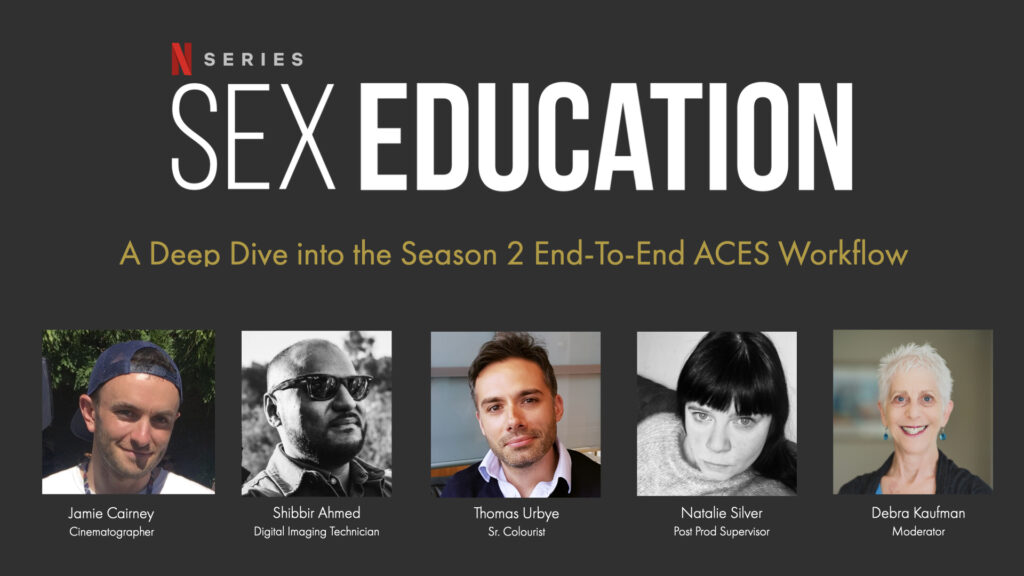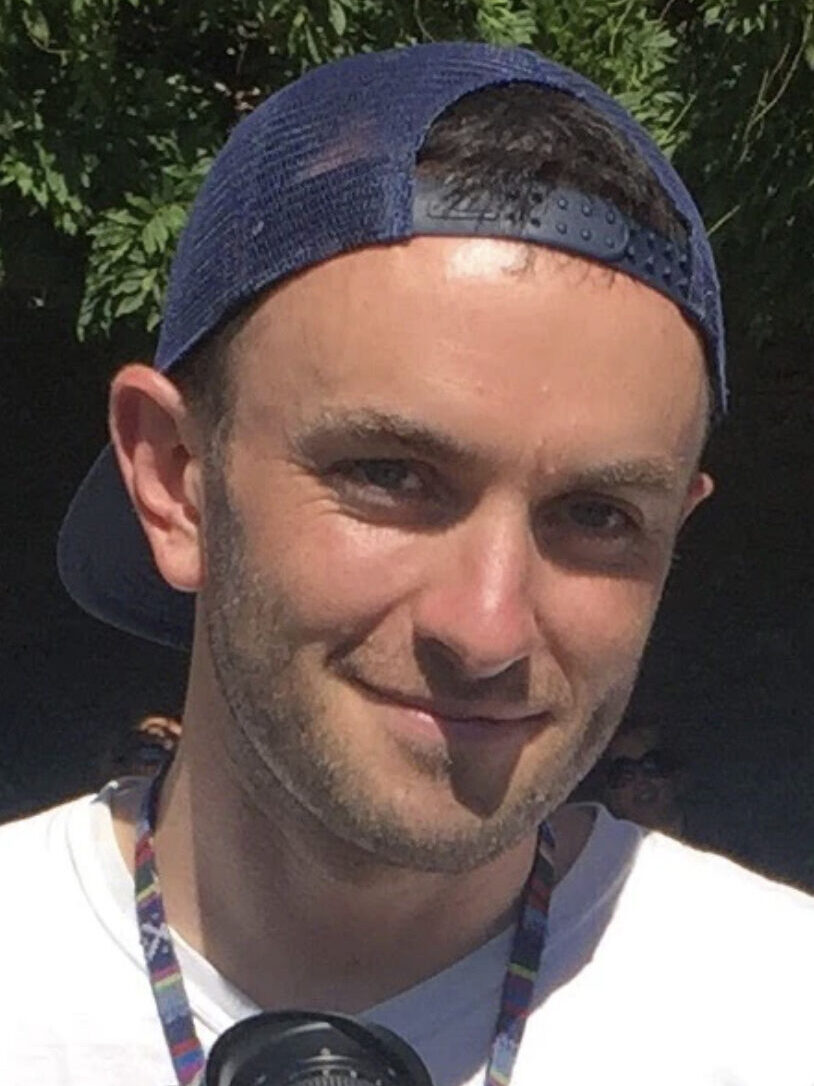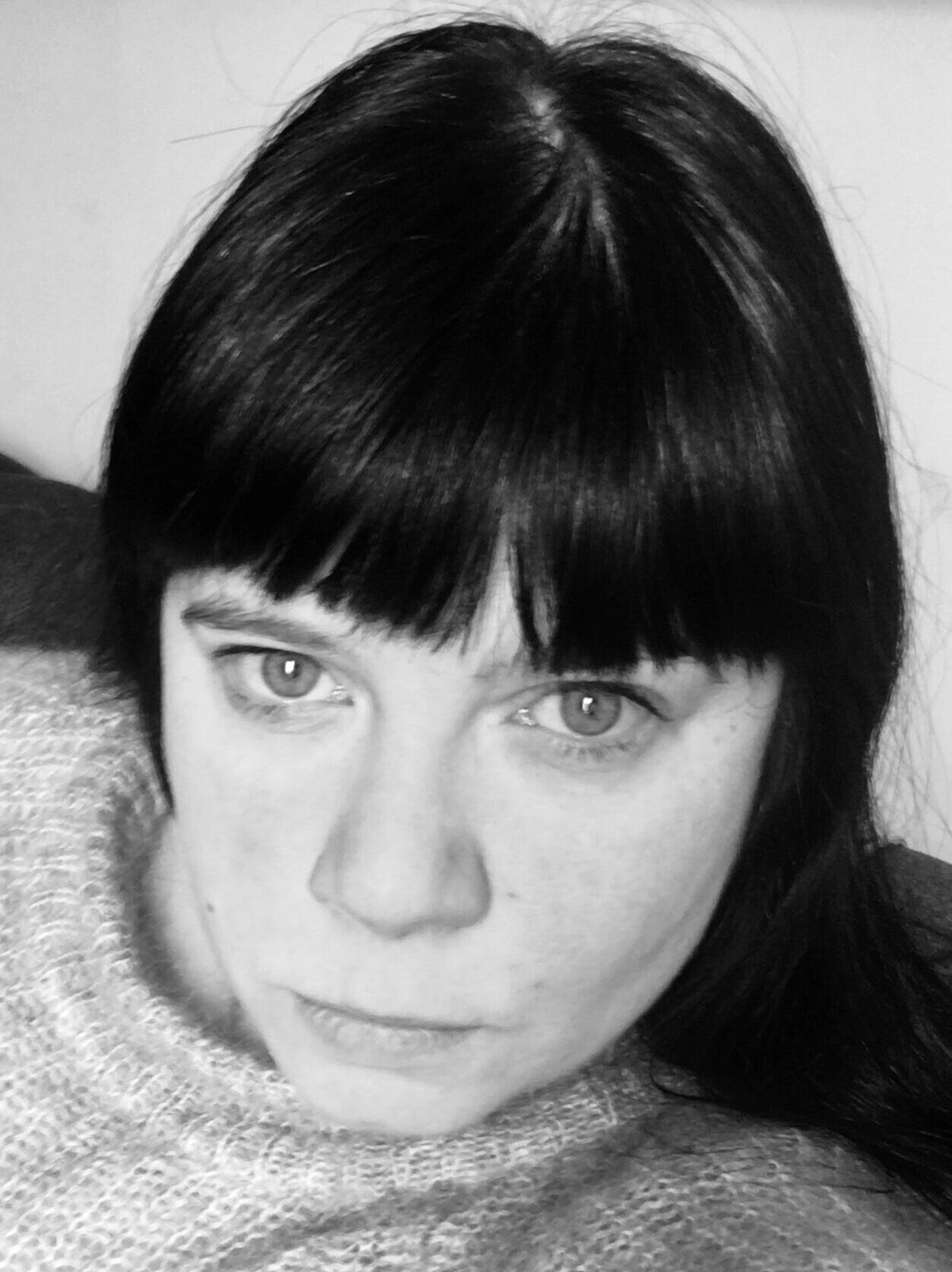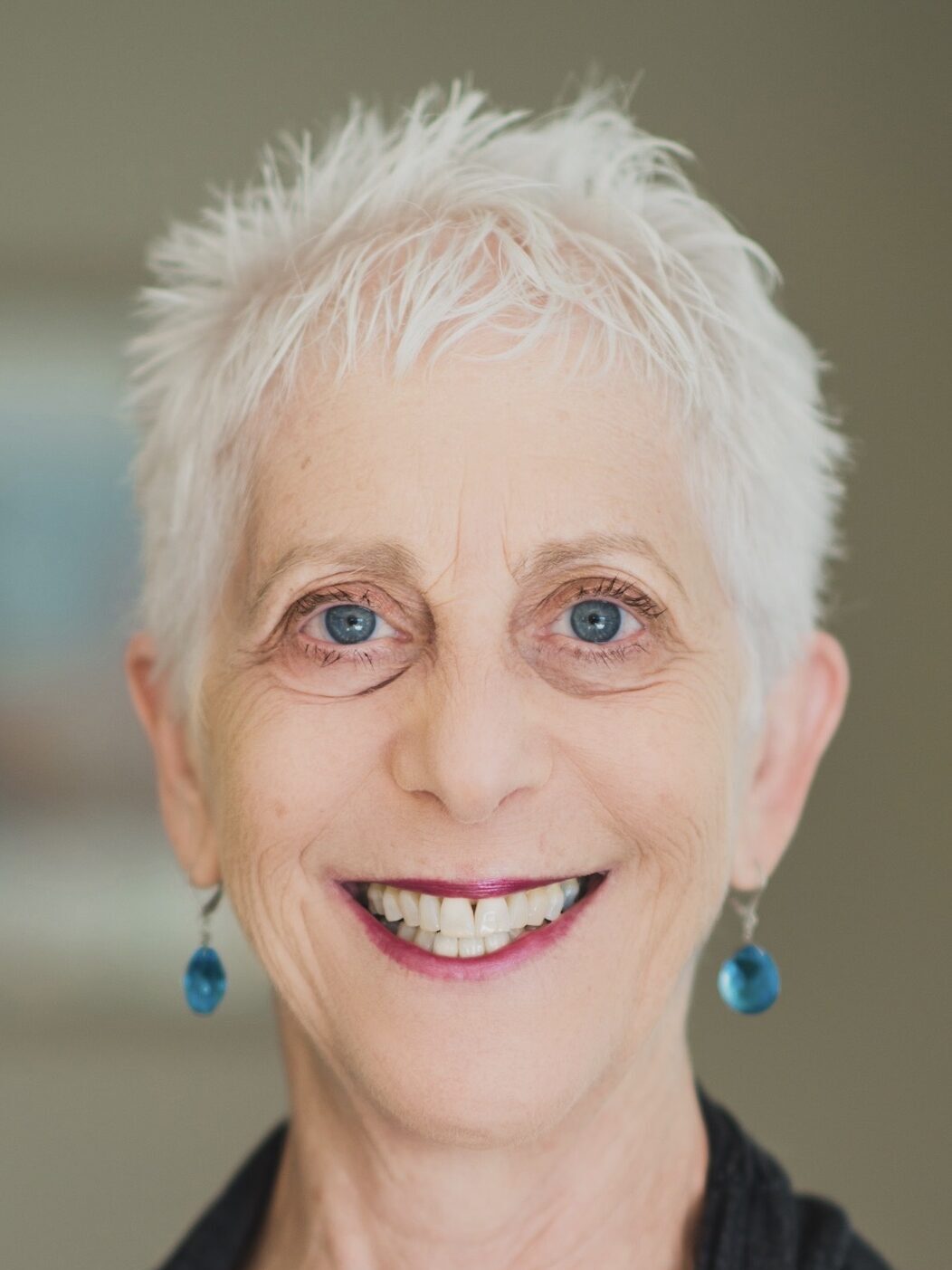Sex Education Season 2 – A Deep Dive into the End-to-End ACES Workflow
This live webinar has finished…enjoy the video!
Discussion thread here.

Thursday October 22, 2020
11:30a PDT/19:30 BST
Join us for a lively and candid conversation with the Season 2 production and postproduction team from Netflix’s hit series Sex Education. Topics explored will include how the decision to use ACES was made, how they prepped and designed the workflow (three of the four panelists were new to ACES), what they discovered as the benefits of ACES and more!
ACES Product Partner equipment that was used on Season 2 includes: Sony Venice, Grass Valley Rio, Nuke, RED Helium (2nd unit) and AVID Media Composer.
Bring your questions!
Attendance is free, but you must register here
Sex Education is about Otis Milburn, a socially awkward high school student who lives with his sex therapist mother, Jean. In season 1 Otis and his friend Maeve Wiley set-up a sex clinic at school to capitalize on his intuitive talent for sex advice. In season 2, as a late bloomer Otis must master his newly discovered sexual urges in order to progress with his girlfriend Ola whilst also dealing with his now strained relationship with Maeve. Meanwhile, Moordale Secondary is in the throes of a Chlamydia outbreak, highlighting the need for better sex education at the school and new kids come to town who will challenge the status quo.
The series is written and created by Laurie Nunn and produced by Eleven. Season 2 is directed by Ben Taylor, Alice Seabright and Sophie Goodhart. Jamie Campbell, Laurie Nunn and Ben Taylor are also Executive Producers on the series.
Many thanks to Netflix for their help in putting together this program.
Panelists

Jamie Cairney
Cinematographer
Two-time winner of the GTC Award for Excellence, DoP Jamie Cairney works on drama, comedy, documentary and commercials. As a freelance DoP he has lit such projects as BAFTA award-winning “The Detectorists”, “Flowers”, “The Thick of It” and “People Just do Nothing”. Jamie was DoP on seasons one and two of Netflix Original “Sex Education.”

Shibbir Ahmed
Digital Imaging Technician
Shibbir has worked in Broadcast TV since 2007, starting as a Digital Technician in BBC Factual, he helped ingest tape-based media & edit assisting multiple Final Cut Pro suites. During his six years there, he was embedded with production teams to design tapeless workflows for shows like Richard Hammond’s Invisible Worlds & Wonders of Life. He also helped shoot slow-mo segments with the Phantom high-speed camera for various shows. Shibbir moved into scripted drama and comedy in 2014. Currently, he works as a DIT/Dailies Colorist, drawing up workflows, working on-set managing data as well as grading the dailies. High profile projects include “Sex Education”, “Detectorists”, Criminal UK” and “Catastrophe.”

Thomas Urbye
Senior Colourist
Thomas founded The Look in 2007, after leaving Technicolor MPC where he was a colourist for four years. He is The Look’s Senior Colourist and CEO. Thomas is recognized as one of the world’s leading colourists, his award-winning work includes recent productions ‘Sex Education’ (Netflix), ‘Fleabag’ (BBC/Amazon), ‘Top Boy’ (Netflix) & ‘Gangs of London’ (Sky/AMC). He also has a long list of credits for feature films and commercials. Thomas’ focus is on expert creativity, innovation across post production & client experience and client experience and being a trusted advisor to the world’s top creatives and producers.

Natalie Silver
Post Production Supervisor
With a career spanning 18 years in the various industry roles, Natalie is still as passionate about creating fabulous film and television as she was when she started out. Natalie started out working firstly as a runner and then in the telecine and grading department as a Junior Colourist at Pepper Post, before freelancing for Technicolor. Her credits in various roles range from tentpole movies like Edge of Tomorrow and Fast and Furious 6 to both UK and International television and shorts. As a freelance Post Production Supervisor in the UK for the past seven years, she’s worked on top television shows including The Alienist, Grantchester, Dickensian, Death in Paradise and Sex Education Season 2.

Debra Kaufman
Moderator
Debra is a well-respected writer in the media and entertainment technology field. She currently writes for USC’s Entertainment Technology Center newsletter, ETCentric. She also contributes to American Cinematographer, International Cinematographer, and NewsPro. Her work has appeared in Wired, The New York Times, the Los Angeles Times, The Hollywood Reporter, Variety and numerous trade publications. She is also a seasoned moderator and has appeared as a speaker on panels at NAB, CES, HPA Tech Retreat, NATPE, Produced By and many other trade shows, consulted on post production, mobile entertainment and other industry issues. She holds a Master’s degree from UCLA and a Bachelor’s from UC Berkeley.
Continue the discussion here: community.acescentral.com
1 more reply

For anyone joining the webinar, who is entirely new to ACES, here is a very short into to ACES!
Short Intro to ACES.pdf (630.5 KB)
I’m just following up and answering some of the questions that I didn’t get a chance to reply to.
As the DIT, I used 2x Sony PVM-A170 monitors. I like the OLED’s and trust the images I’m seeing when I’m grading. Would love to monitor and grade in 4K on set so might look to using the PVM-X1800 at some stage.
I wasn’t in the offline suites but I’d be in contact with our Assistant editor. As things stood on S2, ACES didn’t affect their workflow. The grade was burnt into the DNX deliverables and they edited as normal. You just need to ensure the ALE’s marry up with the DNX36 files.
Music is a very important part for me. When I’m grading, I’m working in isolation in a darken room. I like to have a playlist to match the mood of the scene, it can be inspiring to me. For Sex Education, I curate my own soundtrack and then go back and forth with Ben Taylor (Director & Show runner) about musical choices. It’s got nothing to do with being a DIT but we’re all geeks on set so it opens up discussions/debates, which makes the job that little bit more interesting.
I have many favourite scenes from across the series. Posted screengrabs of my favourite shots on Instagram. But my favourite scene was the ending of Ep3. When Maeve gets a 5-year diary from Otis. Its very simple but all so heart-breaking. Loved the way Sophie Goodhart wrote it and the use of The Velvet Underground’s Pale Blue Eyes was perfect.
I get the footage as soon as the scene has been shot. We reload the camera and I go away to grade and review all aspects of the footage. Then I relay back any possible feedback to our focus pullers/DOP.
Hello Shibbir,
Was there a LUT applied in the Venice’s at all or in the ACES workflow is a rec709 just used on set?
The Venice had no LUT, they monitored REC 709 on set. I had CDL’s which I applied in Resolve which would be my starting point for the look of the scene & then I’d proceed to grade on top of that. We avoided the use of LUT’s/.CUBE files